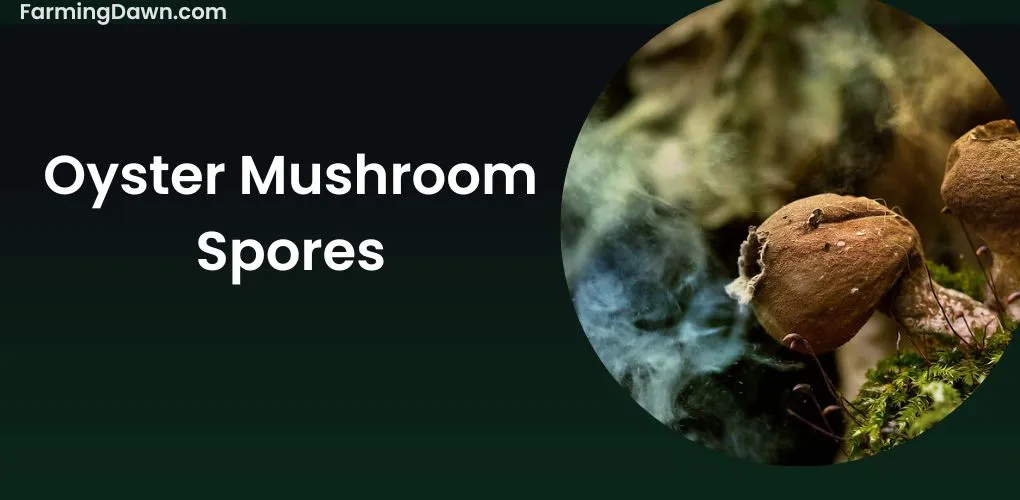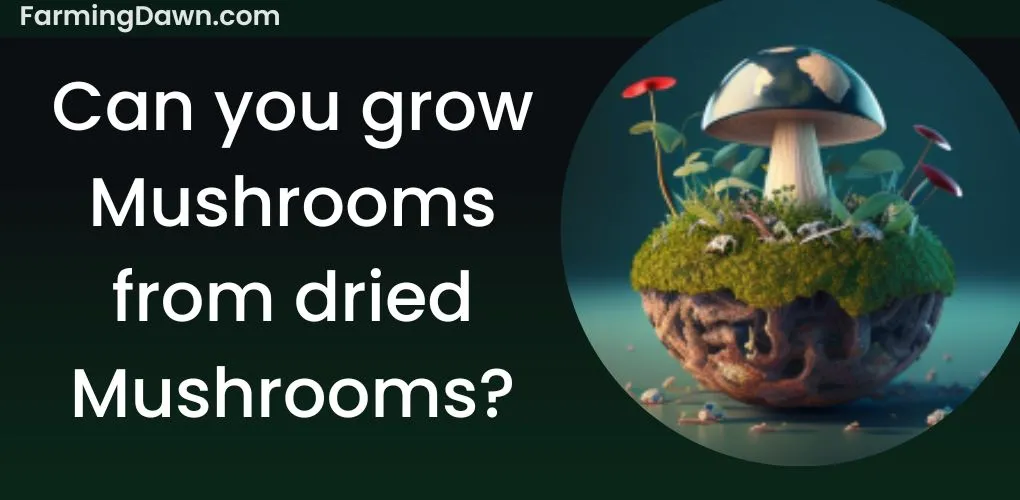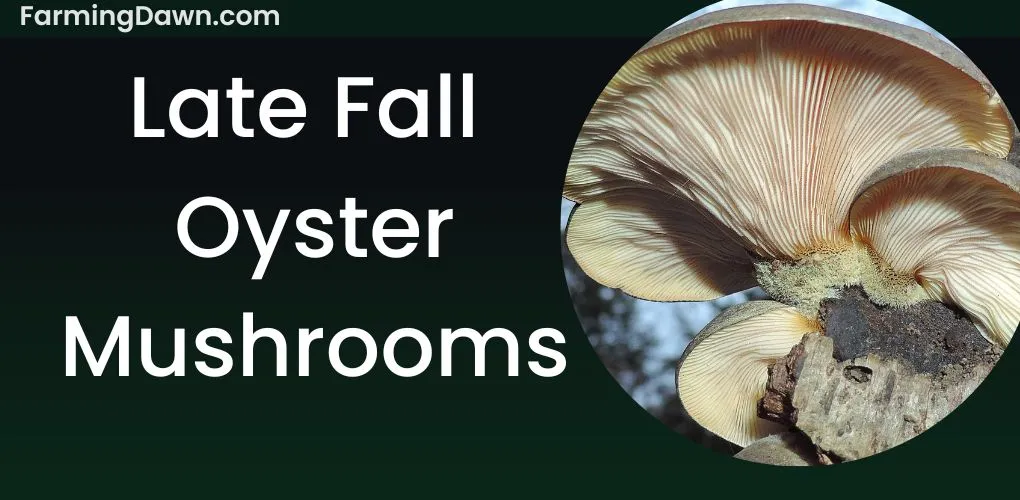Oyster mushrooms are a flexible and enjoyable crop for backyard gardening. And understanding the intriguing biology of oyster mushroom spores is the key to success.
Today our special focus is on the benefits and importance of oyster mushroom spores in the growth and development of oyster mushrooms. I’ll also explain how to gather these spores for a fruitful crop.
Are oyster mushroom spores dangerous?
Although oyster mushroom spores are not toxic or dangerous to humans, some people may react negatively or develop respiratory problems if exposed to them in large quantities. This is due to the fact that the spores are frequently tiny and light, making them simple to inhale.
It is essential to note that oyster mushroom spores normally pose little risk of having negative health impacts. Oyster mushrooms are often considered a nutritious food since they include a range of vitamins, minerals, and other helpful components.
If you are worried about the potential health dangers that oyster mushroom spores might pose, you can use a mask to protect your face.
Importance and Benefits of Oyster Mushroom Spores
Over time, mushroom growing has become increasingly popular, and spores are essential to the process. The reproductive particles of fungi are called spores and are used in the cultivation of mushrooms.
Spores are used to growing new strains of mushrooms:
The genetic material required to create new strains of mushrooms is found in spores. Mushroom growers may produce different and unique strains of mushrooms by utilizing spores that have desirable qualities, including improved yield, flavor, and nutritional value.
Spores have a reasonable price:
Compared to other ways, growing mushrooms from spores is more affordable. Cultivators can buy spores at a reasonable price and use them to grow many mushrooms.
Spores are simple to transport and store:
Spores are are portable and easily stored because they are light and small. It is very simple for you to access various variants from various places because these spores can be transported anywhere in the world in little vials and stored there.
Spores can be modified:
Spores are adaptive to many settings since they can be cultivated in various environments and growing materials. This makes it simpler for growers to test various growing techniques and choose the optimal one for their needs.
What do oyster mushroom spores look like?
Oyster mushroom spores are typically tiny and spherical and come in various colors, including white, grey, and black. When examined under a microscope, they appear as tiny spheres with a diameter of 4-6 micrometers. The color of the spores might vary depending on the strain of the mushroom and its surroundings while it is growing.
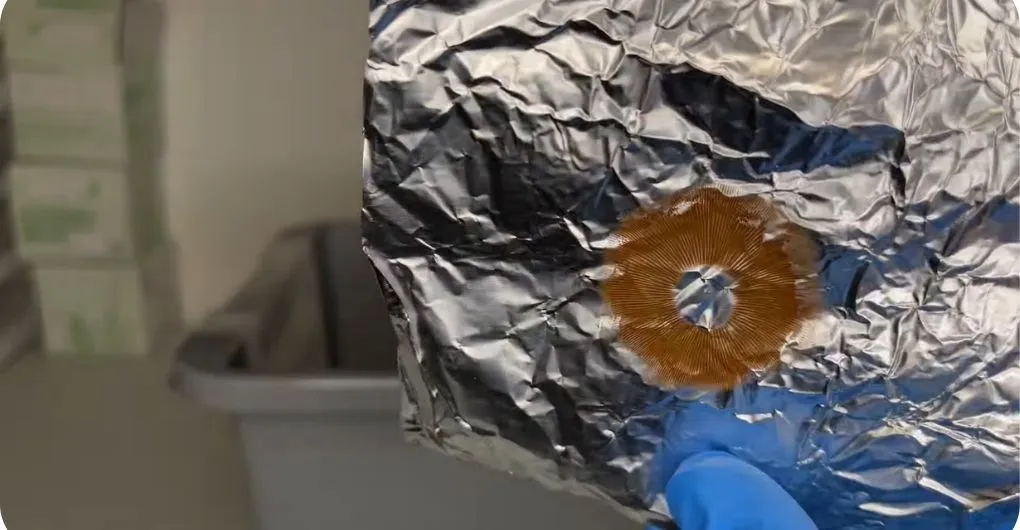
Collecting oyster mushroom spores
The first step in growing these tasty and healthy mushrooms is to get oyster mushroom spores. Even though gathering spores may initially seem difficult, it is quite simple when using the proper equipment and methods.
To begin, you will need a:
- mature oyster mushroom cap
- sterile container
- a sterile tool such as a scalpel or knife.
It’s essential to ensure that all equipment is sterilized before use to avoid contamination and get the best possible results.
Gently remove the stem from the cap to collect the spores, then set the cap, gill-side down, on a piece of clean paper or a glass surface. To let the cap rest undisturbed for several hours, cover it with a clean jar or another container. The cap will release the spores, landing on a surface made of paper or glass.
Scrape the spores into a clean container after they have dropped. You can use a sterile brush or scraper to collect the spores, but you must take care not to disturb them too much. Also, ensure that the spores remain viable.
Preparing the Oyster spores for cultivation
Once the spores have been collected, they must be prepared for cultivation. To do this, prepare a substrate for the spores to develop on. Typically, sawdust and straw are used to grow oyster mushrooms because these mixtures have been sterilized to eliminate any bacteria or fungi that might compete with the oyster spores.
The spores are put on the substrate after it has been ready, and the growing medium is then allowed to incubate in a warm, dark atmosphere. The oyster mushrooms will begin to grow after a few weeks.
Note: I have discussed the complete step of growing mushrooms from these spores in the next section.
Growing oysters from oyster mushroom spores
After you have prepared the substrate for cultivation, it is time to grow the mushrooms. The first step to do that is to inoculate your substrate with the. The spores can be incorporated into the substrate by mixing or injecting them directly with a syringe.
- Incubate your substrate
You must incubate your substrate after you have injected it. This entails keeping it there for a few weeks in a warm, dark environment so the spores can develop and colonize the substrate.
- Fruiting
The time has come to begin the fruiting process after your substrate has been incubated. By doing this, the substrate will be exposed to light and clean air, which will encourage the growth of the mushrooms. You can achieve this by moving the substrate into a grow bag or container and making tiny holes in it so that air can flow through.
- Harvest your mushrooms
After a few weeks of fruiting, your oyster mushrooms should be ready to harvest. Use a sharp knife or razor blade to trim the mushrooms at the root, careful not to harm the substrate.
There you have your tasty and healthy mushrooms in just a few simple steps.
Growing king oyster from king oyster mushroom spores
One of the advantages of growing king oyster mushrooms from spores is that it allows you to produce a large number of mushrooms from a single batch of spores. This method of mushroom cultivation can be economical for household and commercial use.
To grow, you must obtain high-quality spores from a reputable supplier or harvest them from mature mushrooms. To establish a sterile growing environment, the substrate must then be sterilized.
The substrate must also be kept in the dark, humid condition at the proper temperature after being injected with spores to promote mycelial growth. After a few weeks, you’ll see the characteristic pins and caps of king oyster mushrooms ready for harvest.
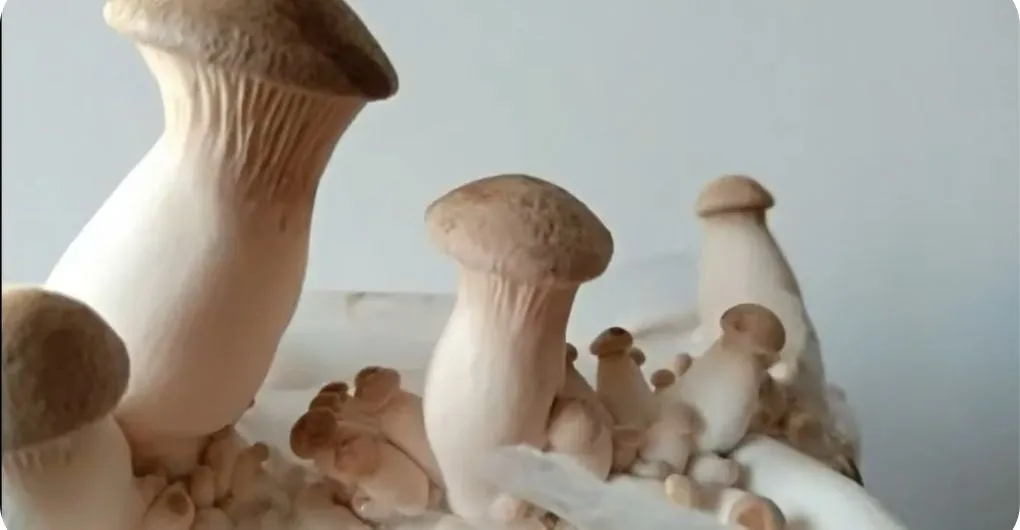
Growing mushrooms from blue oyster mushroom spores
You’ll need to acquire blue oyster mushroom spores and a suitable growing medium, such as sawdust or straw. After that, sterilize your medium to prevent contamination. Mix the spores into it and incubate it in a warm, dark location.
Note: If you want a complete procedure, Scroll up to the Growing oyster mushrooms from the spores section.
Final thoughts on Oyster Mushroom Spores
Thus, oyster mushroom spores are essential for the growth and development of your mushroom crop. With the appropriate strategies and tactics, you can increase the yield of mushrooms in your garden. It’s time to now put your newfound knowledge to work. If you still have any questions, ask me in the comments. Thank you!
Each mushroom spore has its different importance and benefits. Read my other articles to learn more:

